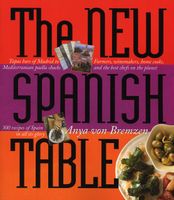The Rice
Published 2005
Whether biryani, risotto, or sushi, a rice-based dish is only as good as the quality of the rice. For paellas and other traditional arroces, cooks in the Levante and Catalonia rely on short- to medium-grain local varieties that are valued for their ability to absorb other flavors and deliver a texture that’s miraculously spongy and firm all at once. A fashionable rice these days is the boutique arroz bomba that grows in the nitrogen-rich soil around Calasparra, a region in the province of Murcia. A low-yield heirloom variety, bomba is extremely dehydrated and absorbs more than three times its weight in liquid, expanding in width like an accordion, rather than in length. Despite its cachet, I’m not a huge fan of bomba, finding it tricky to work with, overly firm, and not as open to absorbing flavor as some other rices. Many Valencian rice cooks who initially embraced bomba share my feelings and are increasingly switching back to humbler but more flavorful strains, such as the smaller-grained senia and bahía. If you do use bomba, remember that it soaks up three to three and a half cups of liquid per cup of rice. I don’t recommend linen sacks of rice simply labeled Calasparra without the word bomba on the package; these contain the lesser balilla x sollana variety, expensive but unremarkable.
Become a Premium Member to access this page
Unlimited, ad-free access to hundreds of the world’s best cookbooks
Over 160,000 recipes with thousands more added every month
Recommended by leading chefs and food writers
Powerful search filters to match your tastes
Create collections and add reviews or private notes to any recipe
Swipe to browse each cookbook from cover-to-cover
Manage your subscription via the My Membership page
Monthly plan
Annual plan
Part of
Advertisement
Related Recipes
-
-
-
-
Related Reference
-
-
-
-
Advertisement



